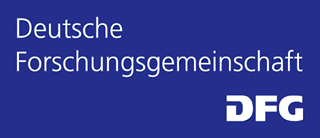Modelling the influence of bubble dynamics on motion, mass transfer and chemical reaction
Ansprechpartner:
Manuel Alejandro Taborda Ceballos
Bubble columns as multiphase reactors are commonly used in industry since they yield a high contact area, which affects directly the required mass transfer. However, bubble movement and the flow structure are very difficult to characterize, so accurate measurements and models are needed to reproduce correctly these behaviours in order to have a precise description of the flow and truthfully numerical calculation results. that correct modelling is still today a challenge, especially when mass transfer and chemical reactions are involved.
In the frame of the project it is planned to account for the bubble dynamics (i.e. shape oscillations and tumbling motion) in the description of bubble motion, mass transfer and chemical reaction for numerical calculations of reacting bubbly flows by the Euler/Lagrange approach. As a result of bubble dynamics they will perform a tumbling motion and their interface as well as the flow in the vicinity of the bubbles will be continuously modified. This will also yield an increase in bubble residence time. As a consequence, mass transfer and reaction rates will be remarkably improved. So far the influence of bubble dynamics was not accounted for in the numerical calculation of bubbly flows by both the Euler/Euler- and Euler/Lagrange-approach. The numerical calculation of the fluid flow will be based on large eddy simulations (LES) using a dynamic sub-grid-scale (SGS) turbulence model. The influence of the bubbles on the fluid will be accounted for in the momentum equations and in SGS turbulence modelling (i.e. turbulence dissipation and bubble induced turbulence, BIT). The dynamic bubble motion will be described through a stochastic variation of bubble eccentricity and orientation angle using a theoretically based bubble oscillation time scale. Regarding mass transfer and chemical reaction, bubble dynamics will be incorporated in the correlations of Sherwood number and enhancement factor.
The models for bubble dynamics in bubble motion, mass transfer and chemical reactions (among others for the system Fe-NO) will be stepwise developed and implemented in OpenFOAM®. In each working stage a detailed validation will be performed based on the experimental studies conducted in various groups of the SPP 1740 (e.g. Prof. Schlüter, TU Hamburg-Harburg; Prof. Kraume TU Berlin; Prof. Hampel, TU Dresden).
 |
 |





